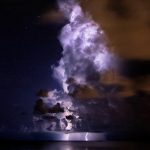Key Takeaways:
- Marcus Reed, a 15-year-old amateur astronomer, astounds the community with his remarkable photograph of Saturn.
- Using a 102mm diameter reflector telescope and a stargazing app, Marcus achieved impressive clarity.
- Marcus’s dedication led him to set up his telescope in his pajamas at 4 am, showcasing his passion for astronomy.
- The image portrays Saturn with its iconic rings, a celestial marvel first observed by Galileo in 1675.
- Experts commend Marcus’s achievement, highlighting the potential of everyday equipment for astrophotography.
In an awe-inspiring feat, a 15-year-old amateur astronomer, Marcus Reed, has captured a breathtaking image of Saturn and its iconic rings, rivaling the work of seasoned astronomers. Hailing from Seaford, East Sussex, Marcus achieved this remarkable feat using a 102mm diameter reflector telescope right in his backyard. What’s even more impressive is that he stayed up until 4 am, relying on an iPhone app called Sky Guide to pinpoint the exact location of Saturn in the night sky.


Marcus, who has a deep passion for astronomy and photography, explained, “I took the picture at about four in the morning. I had turned on the app and saw that Saturn was visible, so straight away I put my slippers on and ran downstairs, setting up my telescope on the back lawn in my pajamas.” This dedication to his craft is a testament to his commitment to the cosmos.
Beyond this remarkable photograph, Marcus harbors ambitious dreams of following in the footsteps of British astronaut Tim Peake. Currently involved in the air cadets, he aspires to join the Royal Air Force and eventually become a commercial pilot. However, his ultimate goal is to join the European Space Agency as an astronaut, a dream fueled by his deep fascination with the cosmos.
Saturn, often referred to as the sixth planet from the Sun and the second-largest in the solar system, has captivated human imagination since ancient times. It wasn’t until 1675 that Galileo Galilei first observed the peculiar rings surrounding the planet through his telescope, although he initially believed them to be moons. It was only later, in 1655, that Christiaan Huygens, using a telescope with greater magnification, described these rings as a disk encircling Saturn. NASA’s Cassini spacecraft has since provided detailed close-up images, revealing these rings to be massive disks composed of rock and ice.
Commenting on Marcus’s achievement, Tom Kerss, an astronomer at the Royal Observatory in Greenwich, praised his work, saying, “This photo really goes to show how the cameras we all carry can be used to get started with astrophotography as long as we have the determination to get outside and patience to take the right shot.” Marcus’s photograph not only showcases the beauty of Saturn but also underscores the potential of amateur astrophotography with modest equipment.

